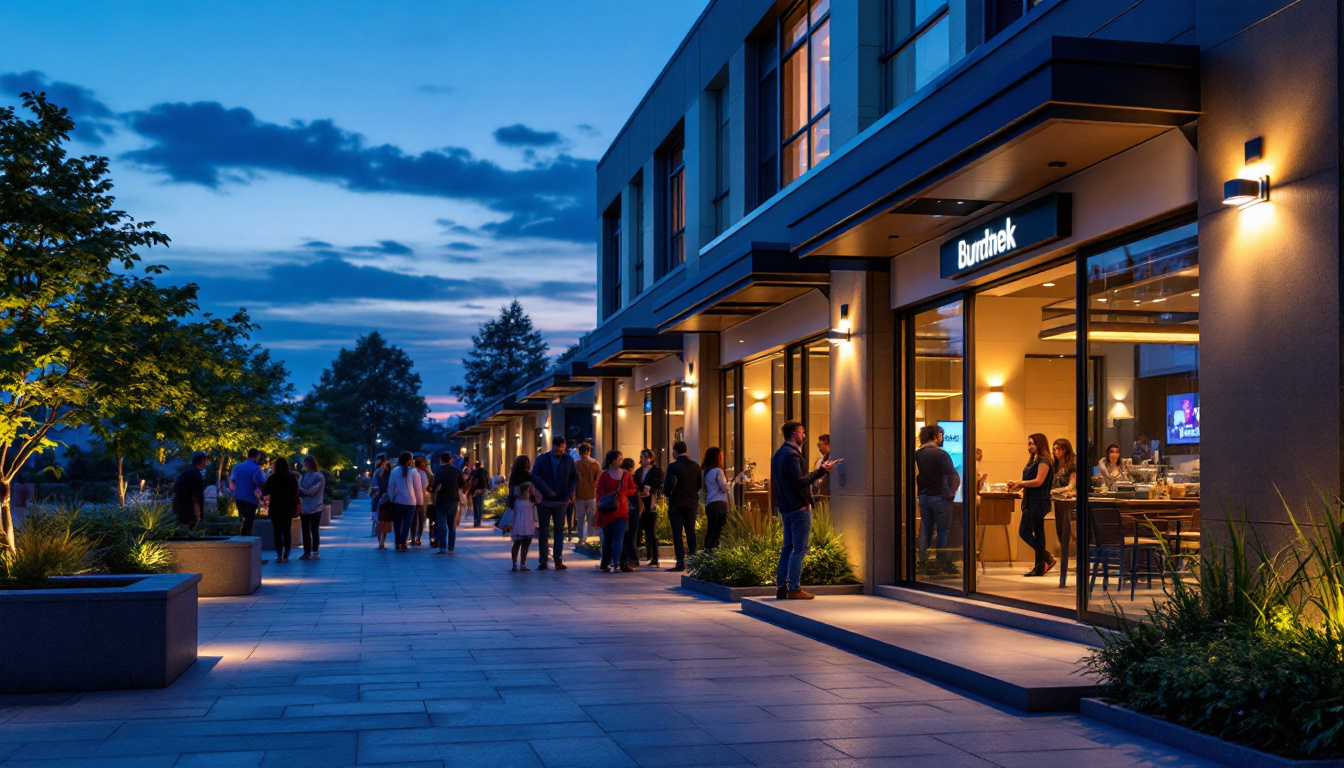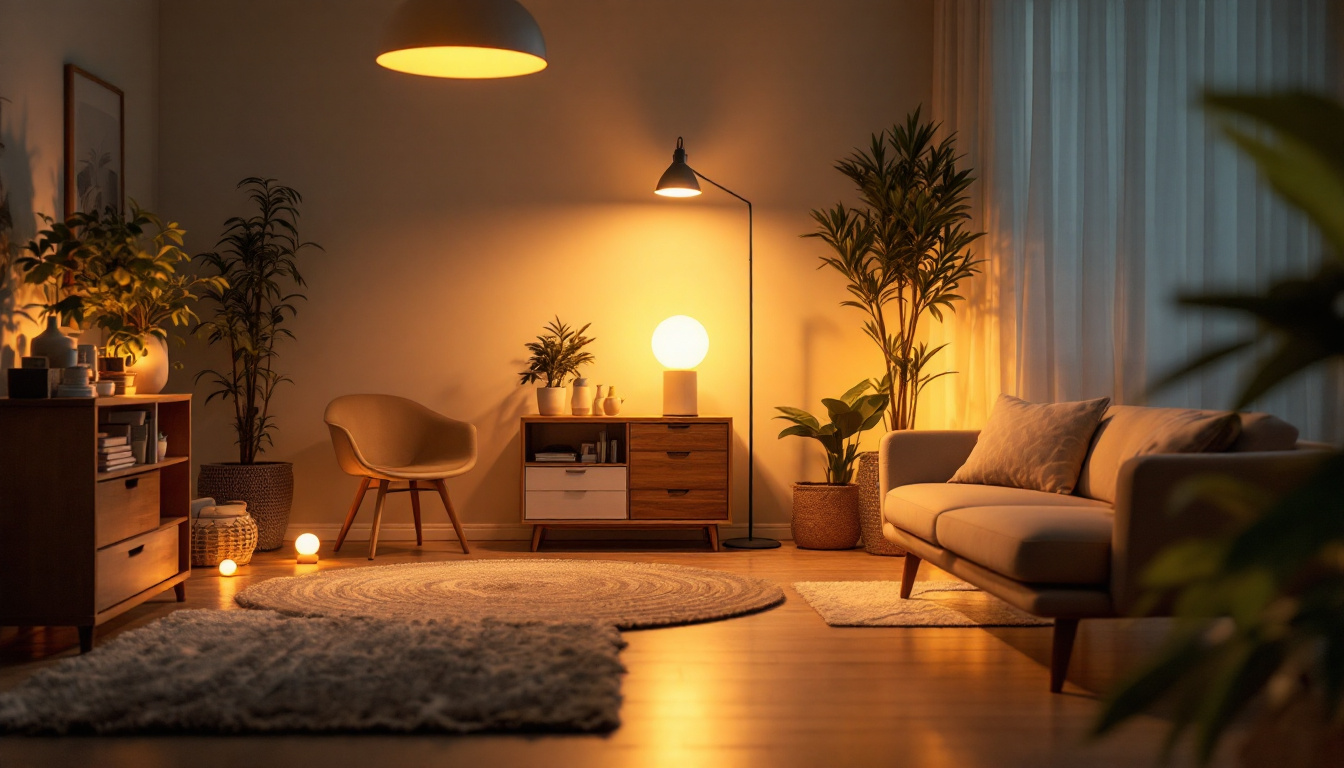
In the realm of commercial lighting, outdoor illumination plays a pivotal role in both functionality and aesthetics. Properly designed and installed outdoor lighting not only enhances safety and security but also elevates the visual appeal of a property. For lighting contractors, understanding the nuances of commercial outside lighting can lead to successful projects and satisfied clients. This article offers quick tips and insights that can help lighting contractors navigate the complexities of outdoor lighting installations.
Outdoor lighting serves multiple purposes that extend beyond mere visibility. It creates an inviting atmosphere, enhances security, and can even influence customer behavior. For contractors, recognizing these benefits is essential for delivering value to clients. The right lighting can transform a mundane outdoor space into an enchanting environment that draws people in, making it a crucial consideration in any design or renovation project.
One of the primary functions of outdoor lighting is to improve safety and security. Well-lit areas deter criminal activity and reduce the risk of accidents. When planning lighting installations, contractors should consider the placement of lights to illuminate walkways, entrances, and parking lots effectively. Using motion sensors can also enhance security by providing light only when needed, thus conserving energy. Additionally, incorporating smart lighting systems allows for remote monitoring and control, giving property owners peace of mind and the ability to adjust lighting based on real-time needs.
Beyond safety, outdoor lighting contributes to the ambiance of a commercial space. Thoughtfully designed lighting can highlight architectural features, landscape elements, and signage. Contractors should consider using a mix of lighting techniques, such as uplighting, downlighting, and accent lighting, to create a layered effect that enhances the overall visual appeal of the property. Furthermore, seasonal lighting displays can add a festive touch during holidays, making the space more inviting to customers and passersby. The use of color-changing LED lights can also provide versatility, allowing for dynamic adjustments that reflect the mood or theme of events held on the premises.
Moreover, the integration of sustainable lighting solutions, such as solar-powered fixtures, not only reduces energy costs but also aligns with eco-friendly practices that are increasingly important to consumers. By utilizing energy-efficient technologies, contractors can help clients achieve their sustainability goals while still providing effective and attractive lighting solutions. This commitment to sustainability can enhance a business’s reputation, attracting environmentally conscious customers and setting a positive example in the community.
The selection of lighting fixtures is crucial in achieving the desired effect and functionality. Different environments and purposes call for various types of fixtures, and understanding these options can help contractors make informed decisions. The right choice not only enhances the aesthetic appeal but also contributes to safety and security, making it essential to consider both form and function in the selection process.
There are several types of outdoor lighting fixtures available, each serving unique purposes. Floodlights are ideal for illuminating large areas, while wall-mounted fixtures can enhance the entryways of buildings. Path lights provide safe navigation along walkways, and spotlights can draw attention to specific features. Additionally, decorative lanterns and string lights can create a warm and inviting atmosphere for outdoor gatherings. Contractors should assess the specific needs of each project to choose the most appropriate fixtures, taking into account the architectural style of the property and the intended ambiance.
In today’s environmentally conscious market, energy efficiency is a significant consideration in outdoor lighting design. Contractors should recommend LED fixtures, which consume less energy and have a longer lifespan compared to traditional incandescent bulbs. Furthermore, the use of solar-powered lights can be an excellent option for remote areas or gardens, as they harness natural sunlight and reduce reliance on the electrical grid. Additionally, incorporating smart lighting controls can further enhance energy savings by allowing clients to adjust lighting levels based on occupancy and time of day. These systems can also be programmed to create dynamic lighting schedules, ensuring that outdoor spaces are well-lit when needed while conserving energy during off-peak hours.
A well-thought-out lighting plan is essential for successful outdoor lighting installations. This plan should consider various factors, including the layout of the property, the intended use of the space, and the preferences of the client. Additionally, it is important to take into account the surrounding environment, such as nearby structures, trees, and natural landscapes, as these elements can significantly influence the effectiveness of the lighting design. By integrating these considerations, a lighting plan can not only enhance functionality but also create a harmonious relationship between the built environment and nature.
Before designing a lighting plan, contractors should conduct a thorough site assessment. This involves evaluating the existing conditions, identifying potential hazards, and understanding the specific needs of the client. By taking the time to assess the site, contractors can develop a lighting plan that addresses safety concerns while also enhancing the property’s aesthetics. During the assessment, it’s also beneficial to observe how the space is used at different times of day. For instance, noting areas that may require additional illumination during evening gatherings or pathways that need to be well-lit for safety can lead to a more tailored and effective lighting solution.
Layered lighting is a design technique that combines different types of lighting to achieve a balanced and dynamic effect. For outdoor spaces, this can include ambient lighting for general illumination, task lighting for specific activities, and accent lighting to highlight focal points. By incorporating these layers, contractors can create versatile outdoor environments that cater to various needs. Furthermore, the use of smart lighting technology can enhance this layered approach, allowing for programmable settings that adjust the intensity and color of the lights based on the time of day or specific events. This adaptability not only improves the user experience but also contributes to energy efficiency, as lights can be dimmed or turned off when not in use.
Outdoor lighting installations must comply with local regulations and industry standards. Familiarity with these requirements is essential for contractors to avoid potential issues during and after installation.
Each municipality may have specific codes governing outdoor lighting, including restrictions on light pollution, fixture heights, and brightness levels. Contractors should familiarize themselves with these codes to ensure compliance and avoid fines or rework. Consulting with local authorities can provide clarity on any regulations that may affect a project.
In addition to local codes, contractors should also be aware of industry standards, such as those set by the Illuminating Engineering Society (IES). These standards provide guidelines on lighting design, including recommended illumination levels for various applications. Adhering to these standards not only ensures compliance but also enhances the quality of the lighting installation.
Proper installation is critical to the performance and longevity of outdoor lighting systems. Contractors should follow best practices to ensure that installations are efficient, safe, and effective.
Outdoor lighting fixtures must withstand various weather conditions, including rain, snow, and extreme temperatures. Contractors should select fixtures rated for outdoor use and ensure that all wiring and connections are properly sealed to prevent moisture intrusion. Additionally, using corrosion-resistant materials can extend the lifespan of the installation.
Correct mounting and positioning of fixtures are vital for achieving optimal lighting effects. Contractors should follow manufacturer guidelines for installation heights and angles to prevent glare and ensure even illumination. Additionally, considering the surrounding landscape and structures can help avoid obstructions that may impede light distribution.
Ongoing maintenance is essential to keep outdoor lighting systems functioning effectively. Contractors should educate clients on the importance of regular upkeep to ensure that lighting remains both functional and aesthetically pleasing.
Encouraging clients to conduct regular inspections of their outdoor lighting systems can help identify issues before they escalate. This includes checking for burnt-out bulbs, damaged fixtures, and any signs of wear and tear. By addressing these issues promptly, clients can maintain the safety and appearance of their outdoor spaces.
Outdoor fixtures are susceptible to dirt, debris, and weather-related wear. Regular cleaning of fixtures, lenses, and surrounding areas can enhance light output and prolong the life of the installation. Contractors can provide clients with guidelines on how to clean fixtures safely and effectively, ensuring that outdoor lighting remains in optimal condition.
Advancements in technology have transformed the landscape of outdoor lighting. Contractors should stay informed about the latest innovations to offer clients cutting-edge solutions that enhance functionality and convenience.
Smart lighting systems allow for greater control and customization of outdoor lighting. These systems can be programmed to adjust brightness levels, change colors, and even sync with other smart home devices. By incorporating smart technology, contractors can provide clients with enhanced convenience and energy efficiency.
Integrating outdoor lighting with security systems can significantly enhance safety. Motion-activated lights can deter intruders, while automated lighting can simulate occupancy when the property is unoccupied. Contractors should explore options for integrating lighting with existing security measures to provide clients with comprehensive safety solutions.
Commercial outdoor lighting is a multifaceted field that requires a deep understanding of design, technology, and regulations. By following these quick tips, lighting contractors can enhance their expertise and deliver exceptional results for their clients. From selecting the right fixtures to ensuring compliance with local codes, each step in the process contributes to the overall success of outdoor lighting projects. As the demand for effective and aesthetically pleasing outdoor lighting continues to grow, contractors who prioritize quality and innovation will stand out in the competitive landscape.
Ready to elevate your commercial outdoor lighting projects with the highest quality fixtures at unbeatable prices? Look no further than LumenWholesale for a vast selection of spec-grade lighting products designed to meet your every need. Say goodbye to middleman markups and hello to superior lighting solutions that blend affordability with performance. With free shipping on bulk orders, LumenWholesale is your go-to source for premium lighting without the premium price tag. Make your next project shine with LumenWholesale – where quality, affordability, and convenience come together.

Discover how track lighting LEDs can revolutionize your lighting projects and help you secure more contracts.

Discover how GE Light can transform your spaces with innovative lighting solutions.

Discover how 8-foot LED lamps are revolutionizing the lighting industry, offering contractors enhanced efficiency, cost savings, and sustainable solutions.

Discover how can light retrofitting can significantly cut costs for lighting contractors while boosting energy efficiency.